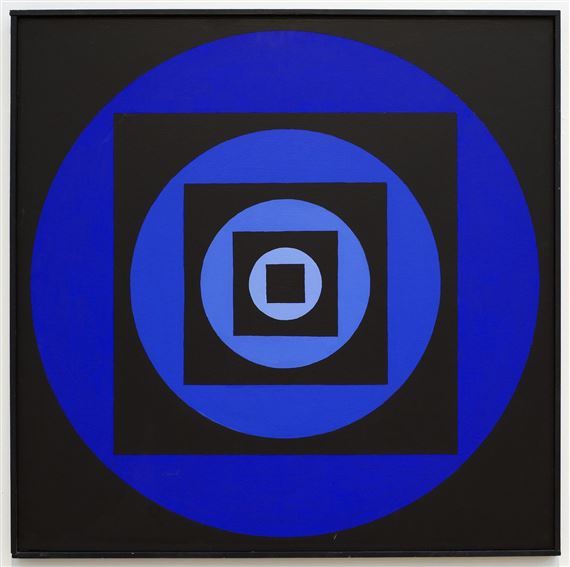Eyborg Guรฐmundsdรณttir's (1924-1977) artistic career is a kind of Cinderella story. From a very young age she had been interested in art, but she never attended art school in Iceland. In 1959, after working for the Agricultural Society of Iceland for 12 years, she uprooted herself and went to Paris to study art. She was admitted to the Acadรฉmie Julien but soon discovered that it was not the place for her, and she then started seeking guidance from French artists. Before long she had become acquainted with some of the best known artists in Paris, among them Victor Vasarely, who agreed to supervise her. Eyborg's rapid progress and her quick and decisive response to the art she saw was extraordinary in view of her very limited previous artistic training. By 1962โ63 Eyborg was already painting fine works which were somewhere between the formalism of strict geometric art and the visual stimulus of Optical Art (Op Art). It is no coincidence that Eyborg chose this route, since back in Iceland she had spent time with Hรถrรฐur รgรบstsson, รorvaldur Skรบlason and Dieter Roth, who were all proponents of strict geometric principles and meticulous structure in their art. Experiments with the movement of forms and optical vibration are also seen in the works of Dieter and Hรถrรฐur from the late 1950s, and Eyborgโs art responded to their work.


